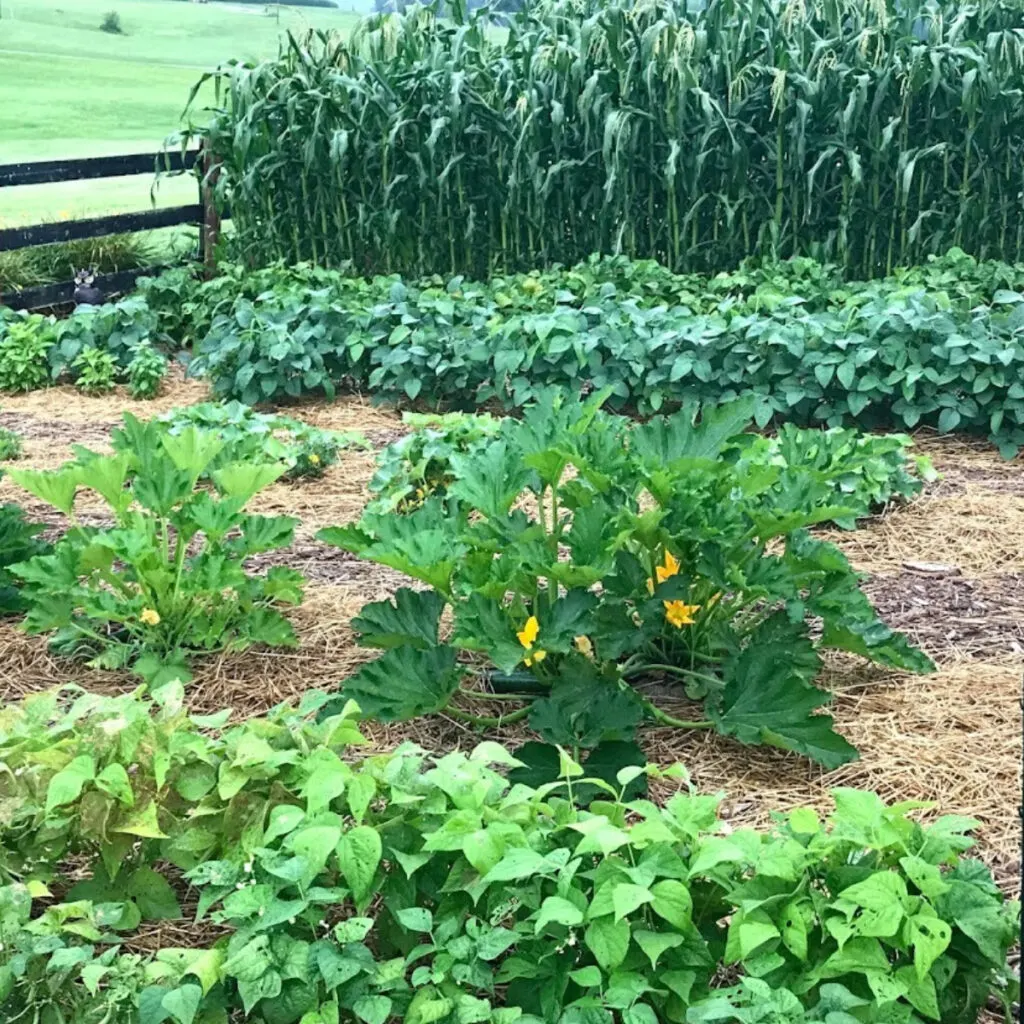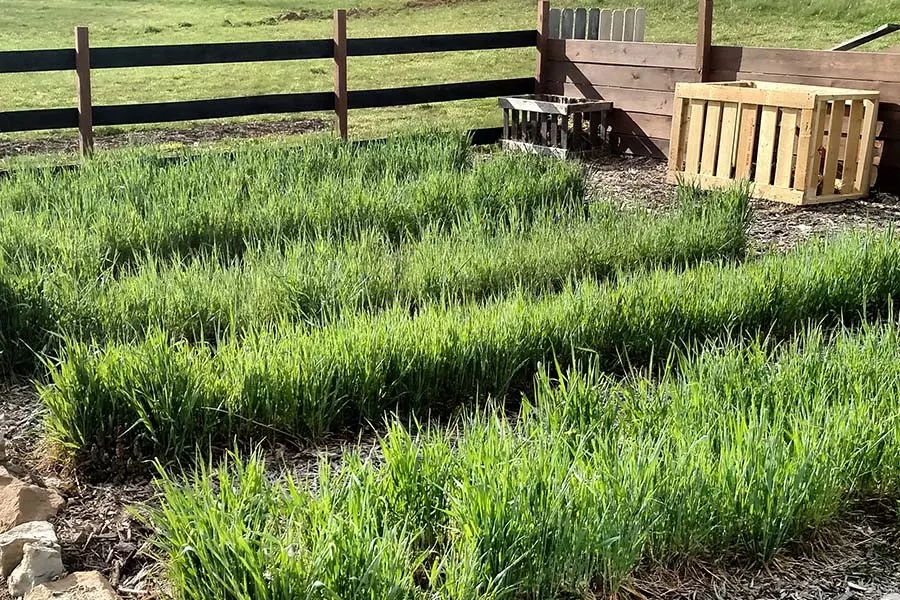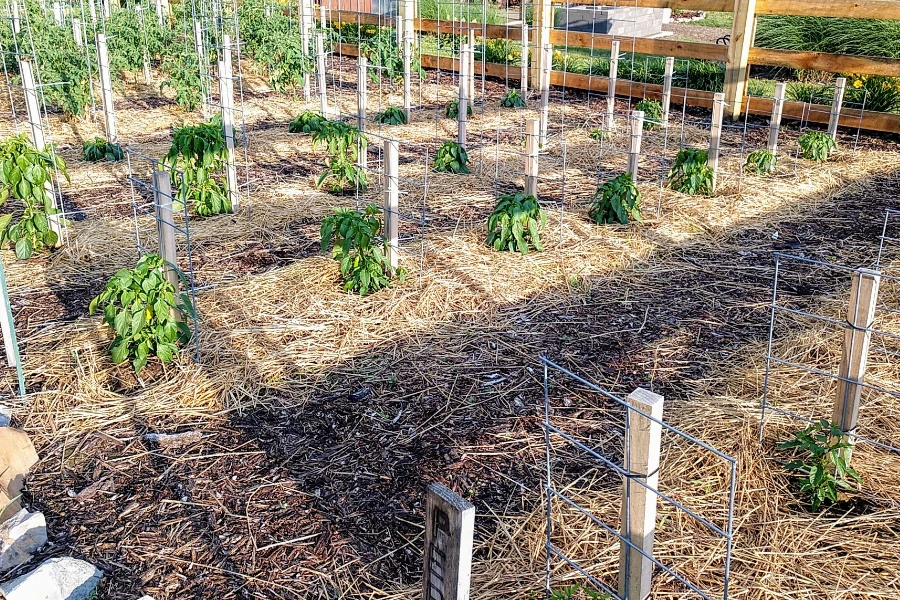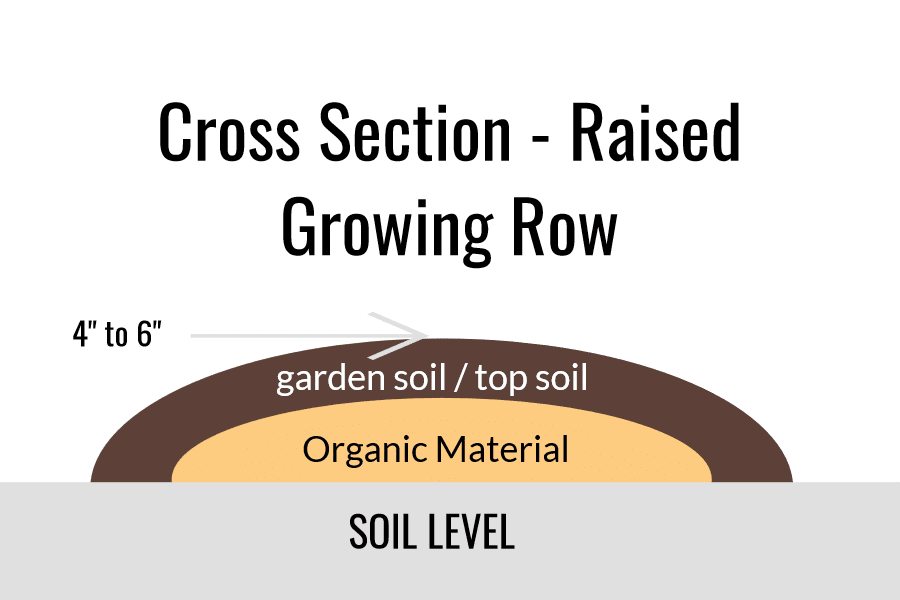There is no better time to set up and create your very own Raised Row Garden than in the fall. Not only is it easy to do – it will set you up to have the best no-till, low maintenance garden around – and have you growing more vegetables than ever before!
There is little doubt that Raised Row Gardening is catching on. And it is easy to see why – by simply implementing an inexpensive, 100 percent organic approach, it allows gardeners to raise and harvest vegetables with ease. All without the need for building expensive walls or raised beds – or the need for a rototiller!
If you are tired of tilling up your garden each and every spring, and tired of constantly weeding or losing your garden to weeds every summer – raised row gardening is for you. It a nutshell, it is a simple, easy, and effective way to garden with less weeds, less work, and far better yields than ever before!

The best part of all is how easy it is to make a Raised Row Garden – whether converting an existing traditional garden or starting with a bare patch of dirt or lawn. Either way, you can easily create the garden of your dreams – all without breaking the bank or your back!
The Benefits Of Growing Vegetables In A Raised Row Garden
We started our very first raised row garden back in 2010 out of pure necessity. We didn’t own a rototiller. And we didn’t have a lot of tools. In fact, all we had was a grassy field as a blank canvas for a garden.
But by using a combination of organic materials and top soil, we built our first growing rows on top of the existing field. We finished by mulching down our walking rows and planted our first crops. And the results were nothing short of astonishing!
By concentrating our efforts on the simple raised growing rows and using mulch to eliminate weeds, we grew an incredibly productive garden that was almost weed free. Even better, it required less water and less work to maintain. And best of all, by using no-till cover crops each fall, it never needed to be tilled again!
And now, some 13 years later, it only gets easier to maintain – and continues to be more productive with better soil year after year.

So if you had less than stellar gardening results this year, or want to start a new garden from scratch – here is a look at how to set up a Raised Row Garden this fall and be ready to grow like never before next spring
How To Set Up A Raised Row Garden In The Fall
Why Fall Is The Perfect Time To Create A Raised Row Garden
Setting up a Raised Row Garden in the fall has several built-in advantages. For one, there is easy access to leaves, straw, and other organic materials to help build your rows. But it also allows you the opportunity to seed your garden with a no-till cover crop.
Cover crops not only recharge and build soil fertility, they also protect your growing space from weeds and weed seeds. Even better, they stop erosion of precious garden soil over the winter.
By creating your garden this fall, you can plant a power charging cover crop. Then, next spring, simply mow it off and plant as it dies off. No tilling, far less weeds, and best of all, way less work. It truly can’t get any easier than that!
How Raised Rows Create A Better Garden – How To Set Up A Raised Row Garden In The Fall
Raised rows work on the concept of creating walking rows and growing rows to form a garden. This system allows you to concentrate and build resources into the growing rows, while not wasting time or energy maintaining the inactive walking row areas.
In any garden setting, the majority of the space used is not where plants grow, but where you walk to maintain them.
Unfortunately, in traditional garden settings, the upkeep of theses walking space takes a tremendous amount of time and resources. Like tilling, pulling weeds and spreading valuable compost or other organic materials in areas plants will never benefit from. But in a Raised Row Garden, the walking rows use mulch to eliminate any need for future maintenance.
In addition, there is no need to apply and waste compost or other valuable nutrients to these areas. Nor is there ever a need to till the walking rows – or any part of the garden again for that matter. Not only does this approach this save time and resources, it creates far less weeds than tilling.
The Set Up – How To Create Raised Rows For The Garden
Whether you create your raised rows from an existing garden or start entirely from scratch, the process of building the growing rows and walkways will utilize the same technique.
Listen In To Our Podcast Below On How To Set Up A Raised Row Garden!
If starting from a grassy area, begin by mowing the area as close to the ground as possible. You can till this area one time in the beginning to use the existing soil for the top of your rows. This step is not necessary, but can save you from bringing in top soil.
Because we had no equipment when we made our first Raised Row Garden, we built our first rows right on top of a field of grass. We then brought in additional soil to place over the organic material. There was no tiller, and it made quick work of the project.
If you are converting a traditional garden into a raised row garden, you can simply lay your rows out and then use the soil from the walking row area to help create the raised soil portion. Again, you can till one last time if you want to have loose soil to work with.
Building The Growing Rows – How To Set Up A Raised Row Garden In The Fall
We create our raised growing rows approximately 18″ wide, allowing 24″ to 30″ between rows for walking space. As for the length of the row, it’s totally dependent on your available garden space. (As a reference, our rows are 20′ long at the farm)
To create the growing rows, a combination of straw, leaves and compost is placed down 4 to 6″ high in the growing rows. It is important here to realize you don’t have to have all three to make it work. What really matters is to get some great organic material in the mix.
Next, a few inches of topsoil needs to go over the organic material to finish the growing row. It all compresses to about 4″ to 6″ in height in the middle of the 18″ rows. As you complete the row building, taper the edges of each side down slightly to avoid a big drop off. This eliminates the need for costly wood or stone sides.
The Fall Set Up Advantage
There are a couple of huge advantages of setting up a new Raised Row Garden in the fall. First and foremost, it allows you to plant a cover crop of cereal rye or oats to add power to your soil and protect against weeds right from the start. Product Affiliate Link : Cereal Rye Cover Crop Seed
When setting up your first garden , you can plant it in your growing row and cover your walking rows too. This will protect the entire space, and snuff out weeds everywhere – including the walking rows. Next spring, you simply mow three or four times until it all dies off.
At this point, you can then plant your growing rows and also cover your walking rows in mulch for good. The dying rye underneath helps protect any weeds from ever coming through.
It is a win-win for you, and your garden! In subsequent years, you only need to plant your growing rows with a cover to keep the powerful, no-till process alive and well.
And for those that want even more detail, we do have our Raised Row Gardening book available. With nearly 200 pages of full color photos, illustrations and advice, the in-depth book covers everything from A to Z on Raised Row Gardening, including composting, companion planting, cover crops and more! See: The Raised Row Gardening Book.
Here is to creating a Raised Row Garden this fall. And even more, to putting the fun and productivity back into gardening next year! Happy Gardening – Jim and Mary.


